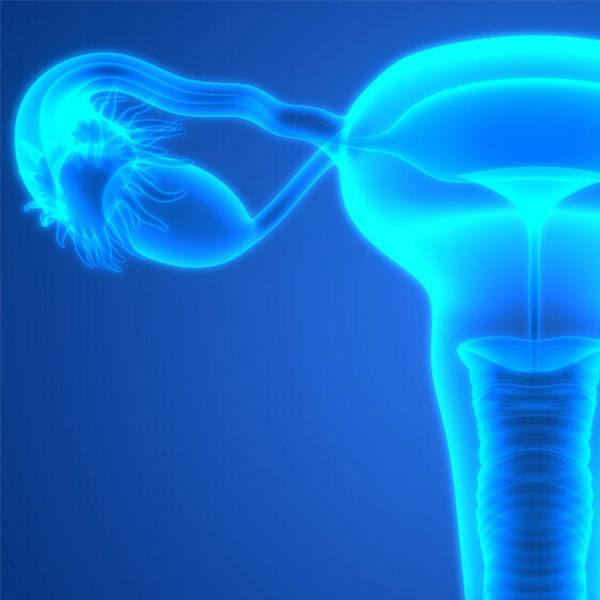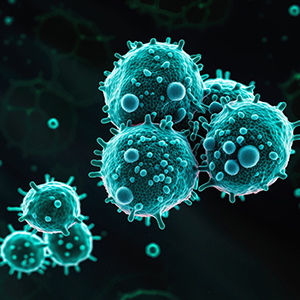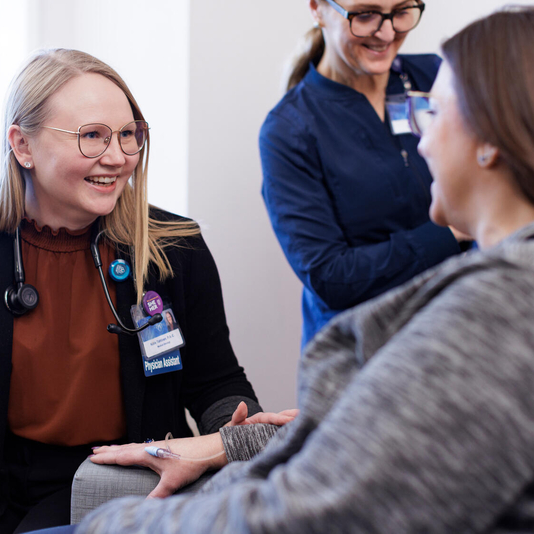-
A Summer in the Lab
Internship program at Mayo Clinic gives college students a chance to explore graduate school and biomedical research.
Like many college students, Nathan Huber spent the summer before his senior year of college lifeguarding. But unlike many of his peers, he did it by helping to develop magnetic resonance imaging (MRI) techniques to better diagnose prostate cancer.
Through Mayo Clinic’s Summer Undergraduate Research Fellowship (SURF) program, Huber joined the research team in Mayo’s Magnetic Resonance Laboratory, led by medical physicist Stephen Riederer, Ph.D. During his 10-week preview of a biomedical research career, Huber helped advance the effort to use blood flow as an indicator of cancer. The team constructed a model, called a “phantom” in lab lingo, to mimic a prostate.
“We wanted to look at how blood perfuses [is supplied to, and circulates] through, the organ and whether subtle changes in blood flow can be used to diagnose cancer,” Huber says.
With plastic tubing in place of blood vessels, the team pumped fluid through polyester fibers to stimulate blood flow through the phantom prostate. In an early model, they saw that the chemical contrast appeared bright where blood flow was healthy and faint where it was obstructed.
“It was really exciting,” Huber says. “We were doing phantom construction, data acquisition and analysis, programming, and theoretical modeling. Anytime you can incorporate all those in a project, you can learn a lot.”
A Gateway to Graduate Education
The SURF program provides research experience and skills to college sophomores and juniors considering a career in biomedical research. They also gain an advantage over other candidates for graduate school.
“This program is a gateway to graduate education at Mayo and throughout the country,” says Bruce Horazdovsky, Ph.D., associate dean of Mayo Clinic Graduate School of Biomedical Sciences and director of the school’s SURF program. “These kinds of research experiences are critical to getting into any graduate school.”
Since 1991, 2,671 students have gained experience in research labs on Mayo campuses in Rochester, Minnesota; Jacksonville, Florida; and Scottsdale, Arizona. The graduate school initially funded the internships, which pay students a stipend of $6,000. Today, grants from the National Institutes of Health, donations from grateful patients and other external funding support nearly half of SURF internships.
Finding Your Place in Research
Huber had signed up for SURF program hoping to discover where his physics and chemistry education might fit in biomedical research. In the Magnetic Resonance Lab, he realized that others on the team were working on real-time MRI signal processing, contrast-enhanced angiography and other innovations.
“I started to see that biomedical engineering can have a universal impact,” Huber says. “Techniques developed in this lab and other Mayo labs have influenced how diagnostic tests are done worldwide.”
He says he also learned more about Mayo research by attending lectures, and about the Mayo culture by talking with colleagues on the research team and Mayo students.
“What’s really special about Mayo is that all the research here is driven by clinical translation and improving clinical applications,” Huber says.
By the end of summer, he says the SURF experience convinced him of a couple things. “It was very influential in my decision to do biomedical engineering in grad school,” Huber says, “and I wanted to apply to Mayo.”
Biomedical Research Wants You
Huber’s reaction is common among Mayo’s summer interns. “SURF is our best recruiting tool,” Dr. Horazdovsky says. “As soon as students step on the Mayo campuses, they are much more likely to apply to our graduate school.”
That goes for all kinds of students. Women are in the majority of those offered internships. About 30 percent of SURF interns:
- Represent racial/ethnic groups under-represented in biomedical research
- Have a life-altering disability
- Come from an economically or academically disadvantaged home
- Are first-generation college students
Lasting Impact
On average, about one-quarter of the students accepted into Mayo’s Ph.D. and M.D.-Ph.D. programs each year attended the SURF program. Many of the others find their way back to Mayo.
“We have SURF alumni populating every level of the professional staff at Mayo Clinic,” Dr. Horazdovsky says. “Some come back after getting a Ph.D. We see others later in their careers.”
Charles Howe, Ph.D., director of Mayo’s Translational Neuroimmunology Laboratory, landed a SURF fellowship in the early 1990s while studying biology at the University of Wisconsin-Eau Claire. He spent the summer with Moses Rodriguez, M.D., a Mayo neurologist and scientist who specializes in multiple sclerosis.
“That definitely gave me an appetite for going into research,” Dr. Howe recalls. “A couple of nexus points in life determine who you become in your career. For me, it all comes back to what I learned from Moses.”
Dr. Howe completed a doctorate in neuroscience at the University of California, San Francisco, and a research fellowship in neurology at Stanford University Medical Center. In 2001, eight years after leaving the Midwest, he returned to Mayo Clinic for a postdoctoral fellowship with Dr. Rodriguez.
Today, Dr. Howe's lab focuses on understanding and manipulating the immune response to damage in the central nervous system as a way to protect and repair neurological function. He also has followed Dr. Rodriguez’s example in mentoring SURF students for the past 15 years.
“I wanted to have that same impact,” Dr. Howe says.
The Next Summer
Huber graduated in May 2017 and enrolled in Mayo Clinic Graduate School of Biomedical Sciences in July 2017. Thanks to a summer internship, he says he found his calling: a doctorate in biomedical engineering with a focus on diagnostic imaging — and a home at Mayo Clinic.
“If you’re interested in biomedical science, there seems to be no better place for clinically translatable research,” Huber says.
─ Jon Holten, January 5, 2018
SURF applications for the summer of 2018 were due by February 1. For up-to-date information on future SURF programs, contact the program coordinator.







